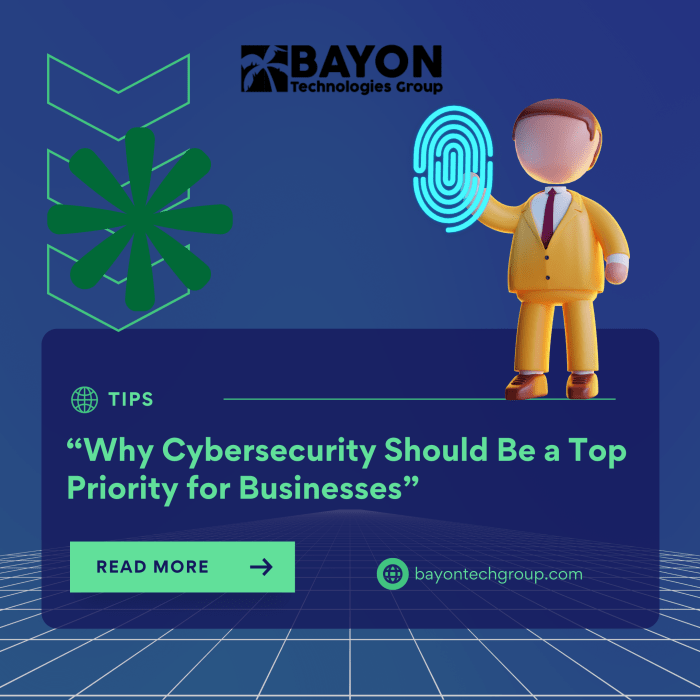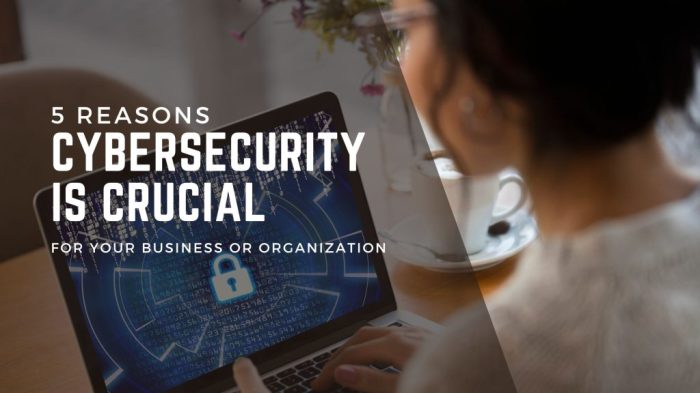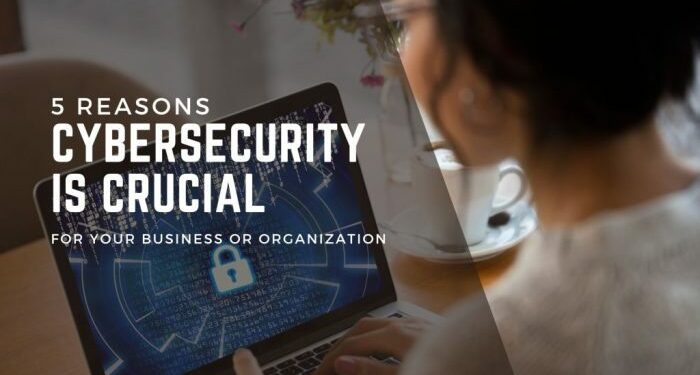Beginning with Why Cybersecurity Should Be Your 2025 Business Priority, this introductory paragraph aims to provide a compelling overview of the topic, setting the stage for a detailed exploration.
The following paragraph will delve into the key aspects Artikeld, shedding light on the significance of cybersecurity for businesses in the upcoming year.
Importance of Cybersecurity in 2025
As we approach 2025, the importance of cybersecurity for businesses cannot be overstated. With the rapid advancements in technology, the threat landscape is constantly evolving, making it crucial for companies to prioritize their cybersecurity measures.
Evolving Cyber Threats Landscape
The cyber threats facing businesses in 2025 are becoming more sophisticated and diverse. From ransomware attacks to supply chain vulnerabilities, organizations are at risk of facing major security breaches that can have devastating consequences.
Recent Cyber Attacks
- One notable example is the SolarWinds cyberattack in 2020, where hackers compromised the software supply chain to infiltrate various government agencies and organizations.
- In 2021, the Colonial Pipeline ransomware attack disrupted fuel supply on the East Coast of the United States, showcasing the impact of cyber threats on critical infrastructure.
Financial and Reputational Risks
The financial and reputational risks for businesses in the face of cyber threats are significant. A data breach can lead to costly regulatory fines, loss of customer trust, and damage to a company's reputation that may take years to recover from.
Technological Advances Impacting Cybersecurity
Emerging technologies like AI and IoT are revolutionizing the digital landscape, but they also bring new challenges for cybersecurity. As businesses increasingly rely on these technologies to operate efficiently, the need for robust cybersecurity measures becomes more critical than ever.
The Role of Automation and Machine Learning
Automation and machine learning play a crucial role in enhancing cyber defense strategies. By automating routine tasks and leveraging machine learning algorithms, organizations can detect and respond to cyber threats more effectively. These technologies enable faster threat detection, real-time response, and proactive security measures to mitigate risks.
Challenges Posed by Interconnected Devices
The increasing interconnectedness of devices through IoT poses significant challenges for cybersecurity. With more devices connected to the internet, the attack surface expands, providing cybercriminals with more entry points to exploit. Ensuring the security of interconnected devices, maintaining data privacy, and managing the complexity of the IoT ecosystem are key challenges that businesses must address in their cybersecurity strategies.
Regulatory Environment and Compliance

In 2025, the regulatory landscape for cybersecurity is expected to be more stringent than ever before. With the increasing number of cyber threats and data breaches, governments around the world are implementing stricter regulations to protect sensitive information and prevent security incidents.
Businesses will need to stay up to date with these regulations to ensure compliance and avoid potential penalties.
Regulatory Landscape for Cybersecurity in 2025
- The regulatory landscape for cybersecurity in 2025 is likely to focus on data privacy, encryption standards, and incident reporting requirements.
- Governments may introduce new laws and regulations to hold businesses accountable for protecting customer data and ensuring the security of their networks.
- Regulatory bodies are expected to conduct more frequent audits and assessments to ensure that companies are complying with the latest cybersecurity standards.
Compliance Standards for Businesses
- Businesses will need to adhere to industry-specific compliance standards such as GDPR, HIPAA, PCI DSS, and ISO 27001 to protect sensitive data and ensure the security of their systems.
- Compliance with these standards involves implementing security controls, conducting regular risk assessments, and maintaining documentation to demonstrate adherence to the regulations.
Implications of Non-Compliance and Potential Penalties
- Non-compliance with cybersecurity regulations can result in severe consequences for businesses, including hefty fines, legal action, and damage to reputation.
- Regulatory penalties for data breaches and non-compliance can amount to millions of dollars, leading to financial losses and operational disruptions for organizations.
- Businesses that fail to comply with cybersecurity regulations may also face lawsuits from affected customers or stakeholders, further damaging their credibility and trust.
Cybersecurity as a Competitive Advantage

In today's digital landscape, cybersecurity is not just a necessity to protect sensitive data, but it can also serve as a competitive advantage for businesses. Prioritizing cybersecurity can set companies apart in the market by demonstrating a commitment to safeguarding customer information and maintaining a secure environment.
Building Customer Trust and Loyalty
Having a strong cybersecurity posture can help build trust with customers, showing them that their data is safe and secure when interacting with your business. This trust can lead to increased loyalty as customers are more likely to continue engaging with a company they feel prioritizes their privacy and security.
Examples of Companies Leveraging Cybersecurity
- Microsoft: Microsoft has invested heavily in cybersecurity measures, making it a leader in the industry. Their focus on security has not only protected their customers but also enhanced their reputation as a trustworthy tech company.
- Amazon: With the vast amount of customer data they handle, Amazon has made cybersecurity a top priority. Their commitment to protecting user information has contributed to their success and customer loyalty.
- JPMorgan Chase: As a financial institution, JPMorgan Chase understands the importance of cybersecurity. By implementing robust security measures, they have built a reputation for safeguarding customer assets and information.
Final Wrap-Up
In conclusion, this discussion highlights the critical importance of making cybersecurity a top priority for businesses heading into 2025, emphasizing the need for proactive measures to safeguard against evolving threats.
Quick FAQs
What are the consequences of neglecting cybersecurity in 2025?
Neglecting cybersecurity in 2025 can leave businesses vulnerable to cyber threats, leading to potential financial losses, reputational damage, and regulatory penalties. It is crucial to prioritize cybersecurity to mitigate these risks.
How can businesses stay ahead of cyber threats in 2025?
Businesses can stay ahead of cyber threats in 2025 by investing in advanced security measures, staying updated on emerging technologies, conducting regular security audits, and providing comprehensive training to employees.









![5 Best eCommerce Marketing Digital Agencies [2024 Edition]](https://share.radartasik.id/wp-content/uploads/2025/08/Best-E-Commerce-Marketing-Agencies-2048x1024-1-120x86.jpg)
